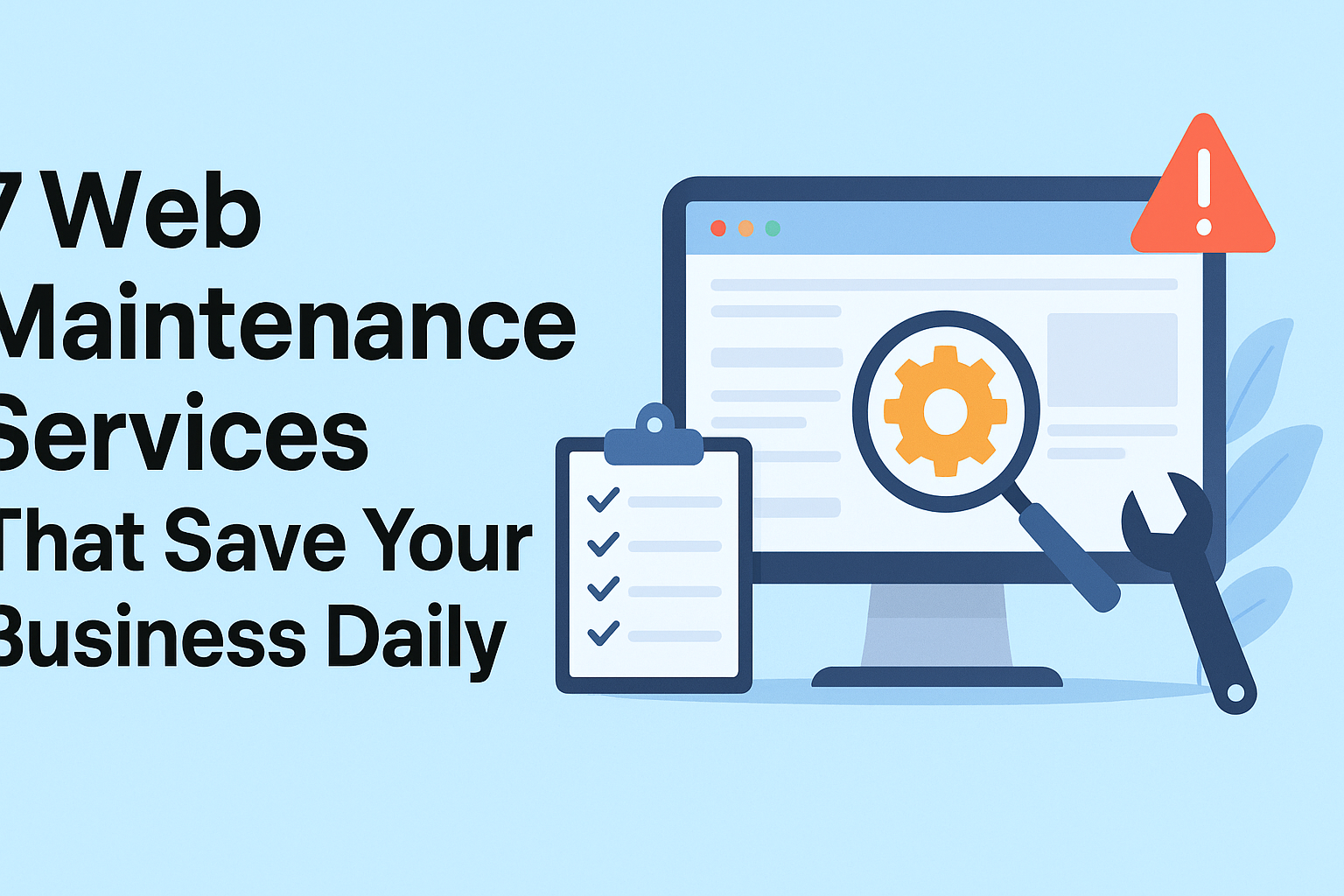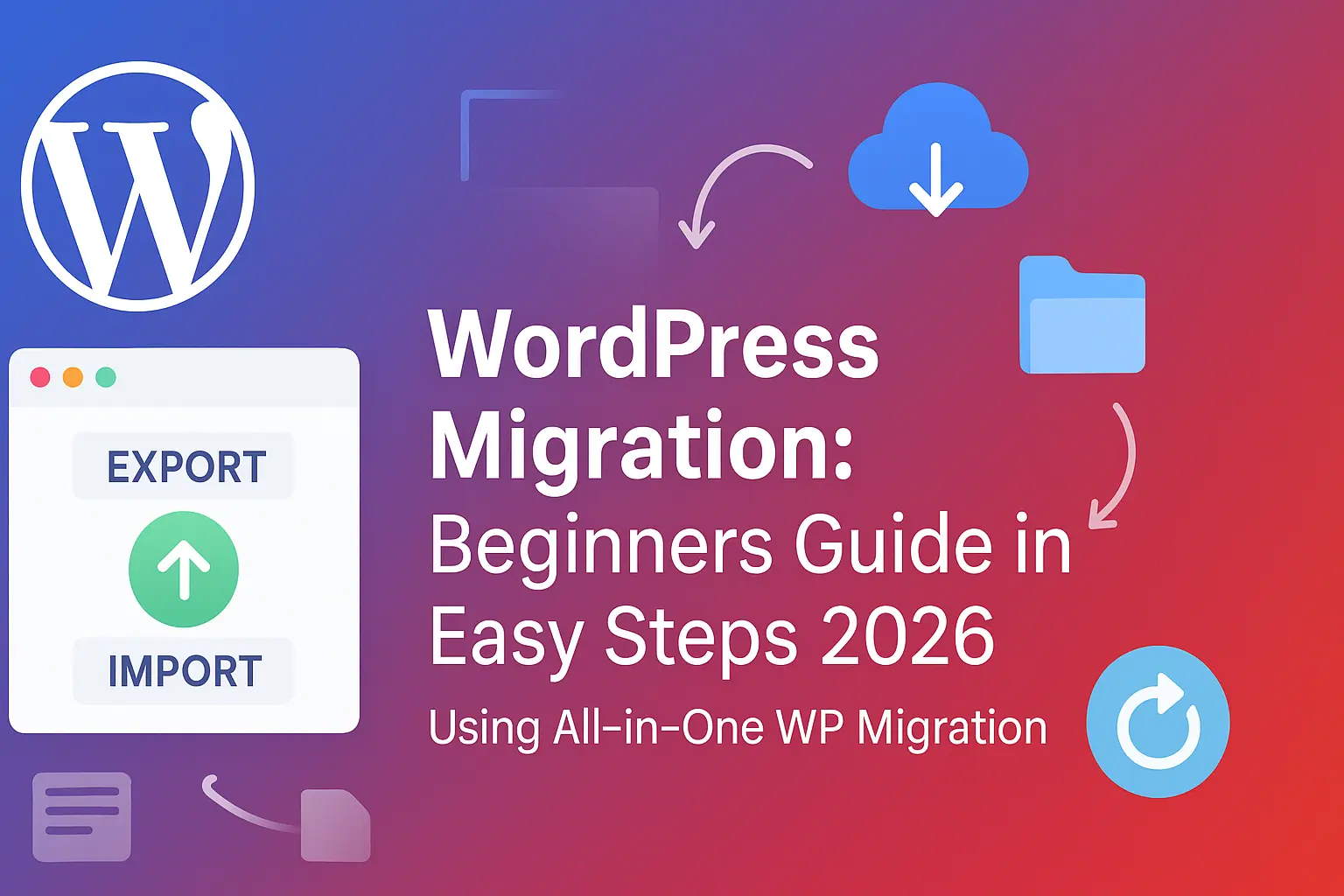Check out
7 Powerful WordPress CRM Tools To Boost Your SalesIt requires more than a single website template to create a successful online presence with custom WordPress development. Today’s businesses require customised solutions that satisfy particular functional requirements and represent their distinct brand identity. For businesses looking for flexibility, scalability, and total control over their digital platforms, custom WordPress development has become the preferred option. Custom WordPress solutions enable businesses to create precisely what they envision, in contrast to pre-built themes that restrict creativity.
The journey to mastering WordPress development involves understanding best practices, leveraging the right tools, and following proven strategies. Understanding the keys to success can significantly enhance results, regardless of whether one is creating a corporate website, an e-commerce platform, or a content-rich blog. Seven crucial secrets that distinguish great custom WordPress website projects from mediocre ones are revealed in this extensive guide.
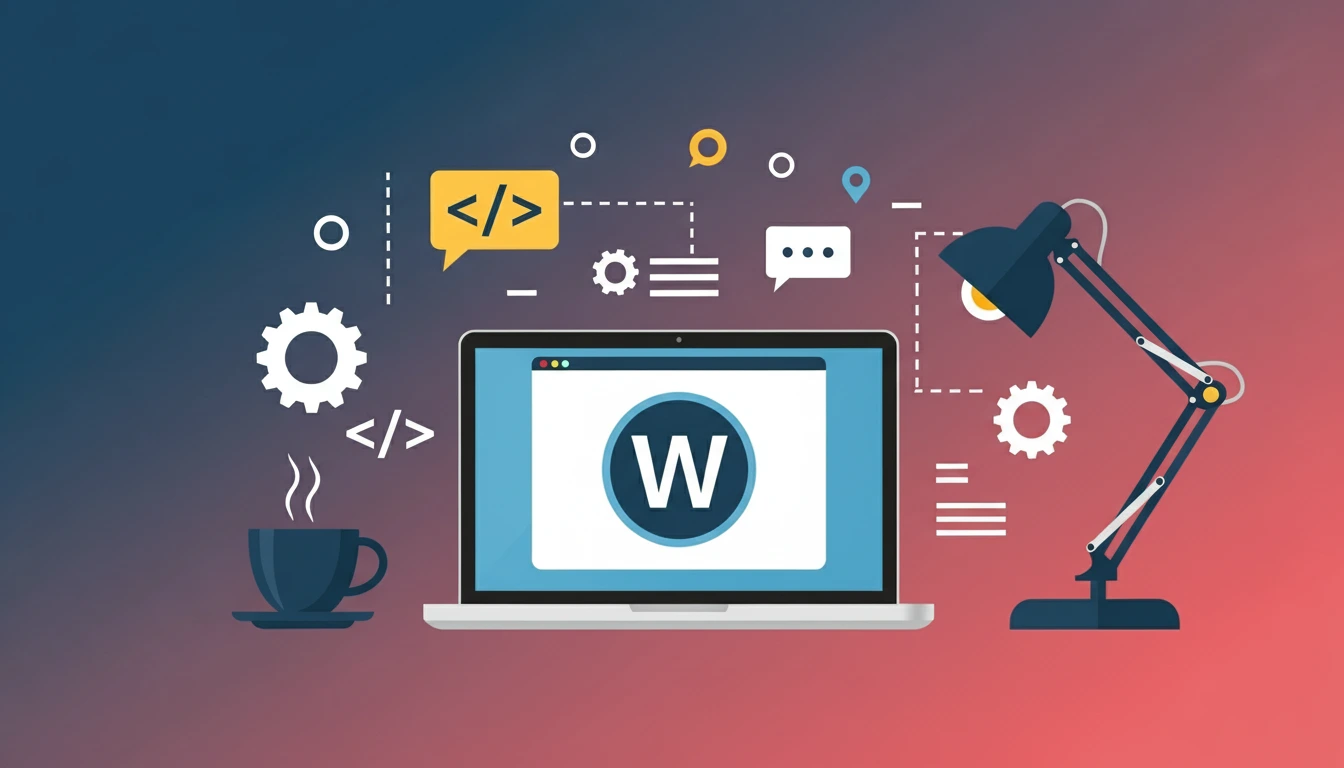
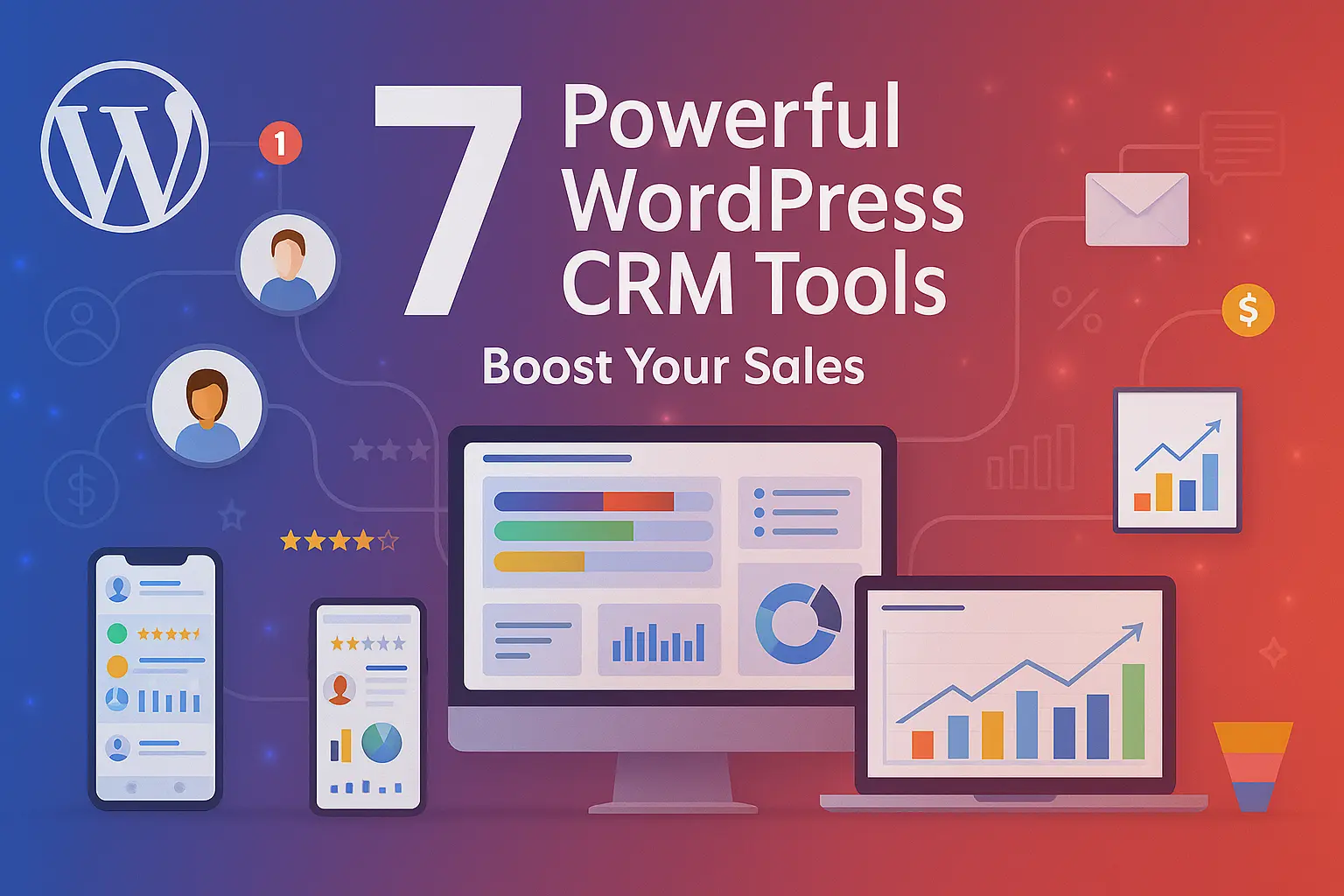
Custom WordPress development focuses on creating a fully tailored website solution that goes beyond pre-built themes and plugins. It enables businesses and individuals to design websites that reflect their unique brand identity, offer specialized functionalities, and perform at the highest level of efficiency.
Key elements of custom WordPress development include:
- Personalized Design & Functionality: Every aspect of the website, from layout to features, is built to match specific business goals and target audience expectations.
- Enhanced Performance: A lightweight structure ensures faster load times, better user experience, and improved SEO performance compared to multipurpose themes.
- Scalability & Flexibility: The website can grow effortlessly with the business, allowing easy integration of new tools, APIs, and features.
- Security Optimization: Custom coding minimizes exposure to common vulnerabilities found in widely used plugins and templates.
- Brand Consistency: Custom themes and designs ensure pixel-perfect alignment with branding guidelines, creating a unique digital identity.
- Ongoing Support & Maintenance: Dedicated management ensures consistent performance, timely updates, and protection against emerging threats.
Custom WordPress development is ideal for organizations seeking a scalable, secure, and high-performance website that delivers complete creative control, long-term adaptability, and a superior online experience.
Planning is the first step in any successful custom WordPress development project. Without a clear roadmap, rushing into development frequently results in missed opportunities and expensive revisions. Experts in WordPress development know that putting in time now will save money later.
Establishing clear business objectives is the first step. What issues does the website need to address? Who is the intended audience? Which features are a must and which are optional? These queries are answered, and reasonable deadlines are established with the aid of a WordPress consultation.
Making a thorough project brief guarantees that all parties remain on the same page during development. Core functionality requirements, design preferences and brand guidelines, technical specifications and integrations required, content strategy and migration requirements, as well as performance and security standards, should all be outlined in this document.
The success of a website is greatly influenced by UI/UX design. Developers should map out user journeys and pinpoint problems with current solutions before writing a single line of code. Responsive design isn’t optional anymore; it’s a fundamental requirement that ensures seamless experiences across devices.
Teams can stay organised and complete projects on time by using WordPress project management techniques. Collaboration between designers, developers, and content producers is facilitated, and stakeholders are kept informed through the use of tools such as Jira, Asana, or Trello.
Not every WordPress website development project calls for the same methodology. Knowing when to use themes instead of creating entirely original solutions saves money and time while producing the best possible results.
Although it takes more time to develop, creating a WordPress theme from scratch offers the most flexibility. For companies with complex functionality or special branding needs that off-the-shelf themes cannot accommodate, this strategy makes sense. A custom WordPress website that is created from the ground up guarantees flawless alignment with business objectives and no extraneous code bloat.
A compromise is offered by WordPress customisation of pre-existing premium themes. Reputable themes such as GeneratePress or Kadence provide strong frameworks that developers can adapt to suit particular requirements. This method allows for substantial personalisation while speeding up development.
When standard plugins fail to provide the necessary functionality, WordPress plugin development becomes necessary. Tailored solutions for specialised integrations, proprietary workflows, or distinct business processes are offered by custom plugins. Plugin customization of existing tools can also extend functionality without reinventing the wheel.
WooCommerce development experience is very helpful for e-commerce projects. Custom WordPress solutions guarantee that online stores run precisely as required, whether that involves creating unique product types, putting intricate shipping calculations into place, or integrating with inventory management systems.
The WordPress ecosystem is still changing quickly. Exceptional developers distinguish themselves from those who are mired in antiquated approaches by staying up to date with contemporary technologies and development practices.
Without a head, the state-of-the-art in CMS customisation is WordPress. This method allows developers to create blazingly fast user interfaces with React, Vue, or other JavaScript frameworks by separating the WordPress backend from the frontend presentation layer. Headless architecture works well for applications needing outstanding performance and multi-platform content delivery, but it isn’t appropriate for every project.
For many use cases, traditional WordPress CMS implementations are still entirely valid. Instead of forcing every project into the same mould, the secret is to match technology choices to project requirements.
These days, websites are rarely isolated. WordPress websites can connect to payment gateways, marketing automation platforms, CRM systems, and a myriad of other services thanks to API integration features. Understanding how to safely establish these connections while preserving site performance is part of WordPress development expertise.
Salesforce, HubSpot, Mailchimp, Stripe, and proprietary business systems are among the frequently used integrations. To guarantee that data flows properly and security is maintained, every integration needs to be carefully planned.
Conversion rates, search engine rankings, and user experience are all directly impacted by website speed. If a page takes longer than three seconds to load, visitors will leave for competitors. Optimising a website’s performance should not be an afterthought; rather, it should be incorporated into the development process from the beginning.
Site speed optimization encompasses multiple technical strategies that boost performance:
- Image optimization through compression and modern formats like WebP
- Multi-level caching (browser, object, and page caching)
- Database cleanup to remove post revisions and spam comments
- Minimizing HTTP requests by combining CSS and JavaScript files
- Lazy loading for images and videos
Performance potential is greatly impacted by WordPress hosting options; managed WordPress hosts usually provide server configurations that are optimised and perform better than standard shared hosting.
Bloated code performs worse than clean, efficient code. Combining CSS and JavaScript files minimises HTTP requests and cuts down on server round-trips. By using lazy loading for videos and images, browsers are guaranteed to load content only when users scroll to it.
By directly inlining necessary styles into HTML, critical CSS techniques enable visible content to render before external stylesheets have finished downloading. Page display is not delayed by render-blocking resources when non-essential JavaScript is deferred.
Security lapses can lead to large financial losses, harm reputations, and compromise customer data. WordPress security necessitates careful consideration during development and continuous upkeep. Common attack vectors are thwarted by secure WordPress site configurations.
Key security measures include:
- Changing default login URLs to prevent bot attacks
- Implementing two-factor authentication for additional protection
- Limiting login attempts to block brute force attacks
- Removing unused plugins and themes to eliminate vulnerabilities
Security flaws found in core software are fixed by regular WordPress updates. Keeping themes and plugins up to date guarantees that known exploits are quickly fixed.
SSL certificates safeguard private data, including payment information and passwords, by encrypting data transmission between browsers and servers. Non-HTTPS websites are marked as unsafe by modern browsers, which erodes user confidence.
Website Security Measures
| Security Measure | Impact Level | Difficulty | Maintenance Required |
|---|---|---|---|
| SSL Certificate | Critical | Easy | Annual renewal |
| Two-Factor Authentication | High | Easy | None |
| Regular Backups | Critical | Medium | Daily/Weekly |
| Firewall Protection | High | Medium | Monthly updates |
| Malware Scanning | Medium | Easy | Weekly scans |
Constant security monitoring is part of WordPress maintenance. Wordfence and Sucuri are two examples of services that check websites for malware, keep an eye on file integrity, and notify administrators of any questionable activity. Frequent backup plans guarantee speedy recovery if breaches happen despite precautions.
Using strong passwords, altering database table prefixes from their defaults, and limiting database user permissions to the bare minimum are all part of database security. Unauthorised changes to important system files are prevented by appropriate file permissions.
More than half of all web traffic comes from mobile devices. Websites that don’t focus on mobile experiences miss out on huge audiences and income. Regardless of device, mobile-friendly design principles guarantee that every visitor has the best possible experience.
Instead of developing distinct mobile versions, responsive design seamlessly adjusts layouts to various screen sizes. Implementing responsive layouts is now simpler than ever, thanks to contemporary CSS techniques like Flexbox and Grid. Real-world testing identifies problems that desktop browser emulators might overlook.
Instead of using precise mouse cursors, touch-friendly interfaces allow for finger navigation. Sufficient distance between buttons and links is necessary to avoid unintentional tapping. On touchscreens, navigation menus ought to function naturally without requiring intricate interactions.
On mobile networks, where bandwidth may be scarce, page speed is even more important. Images that are specifically optimised for mobile viewports transfer less unnecessary data. Through web browsers, Progressive Web App (PWA) features can offer experiences similar to those of apps.
All users, including those with disabilities, benefit from accessible websites. Correct content interpretation by screen readers is made possible by a semantic HTML structure. For users who are blind or visually impaired, alt text for images provides descriptions of visual content. People who are unable to use mice can still access all features thanks to keyboard navigation.
For users with vision impairments to be able to read text, colour contrast ratios must adhere to WCAG guidelines. Input fields must be clearly associated with form labels and error messages. Additional context for assistive technologies is provided by ARIA attributes.
Websites are dynamic, changing as businesses expand and needs shift. Instead of just optimising for present requirements, bespoke WordPress development must consider future growth. When features grow or traffic volume rises, scalable architecture avoids expensive rebuilds.
As content libraries expand, database schema design affects long-term performance. Even with thousands of posts, sites stay fast thanks to proper indexing and query optimisation. Database overload during traffic spikes can be avoided by putting multiple-level caching strategies into place.
The infrastructure for hosting WordPress should grow with the company. Many companies begin with shared hosting but eventually need cloud-based or dedicated solutions. Early migration path planning helps to avoid last-minute emergency manoeuvres.
No matter where a visitor is located, Content Delivery Networks (CDNs) ensure quick delivery by distributing static assets across international server networks. CDNs are becoming more and more necessary to ensure consistent performance as audiences expand globally.
Security updates, performance tracking, backup confirmation, and functionality testing are all included in WordPress maintenance. WordPress agency partners frequently offer recurring support packages that take care of these standard duties, freeing up companies to concentrate on their core competencies rather than technical administration.
Before being deployed to production sites, WordPress updates must undergo thorough testing. Developers can confirm compatibility between new WordPress versions and pre-existing themes, plugins, and customisations by using staging environments. Automated testing finds problems before they impact real-time visitors.
Migration services help businesses transition between hosting providers or upgrade server infrastructure. Professional WordPress migration ensures zero downtime and preserves all content, settings, and customizations during moves.
SEO for WordPress involves both technical optimization and content strategy. Key technical elements include:
- XML sitemaps for search engine crawling
- Robots.txt files to control indexing
- Canonical URLs to prevent duplicate content
- Schema markup for rich snippet displays
- Proper internal linking structure
Search rankings are affected by security, mobile optimisation, and page speed. Google gives priority to mobile-friendly, secure, and quick websites in its search results. Frequent content updates indicate ongoing upkeep and new data.
Internal linking techniques aid in the discovery and comprehension of site structure by search engines. Both user experience and SEO are enhanced by descriptive slugs and clear URL structures. Additional ranking signals are provided by optimising images with alt text and descriptive filenames.
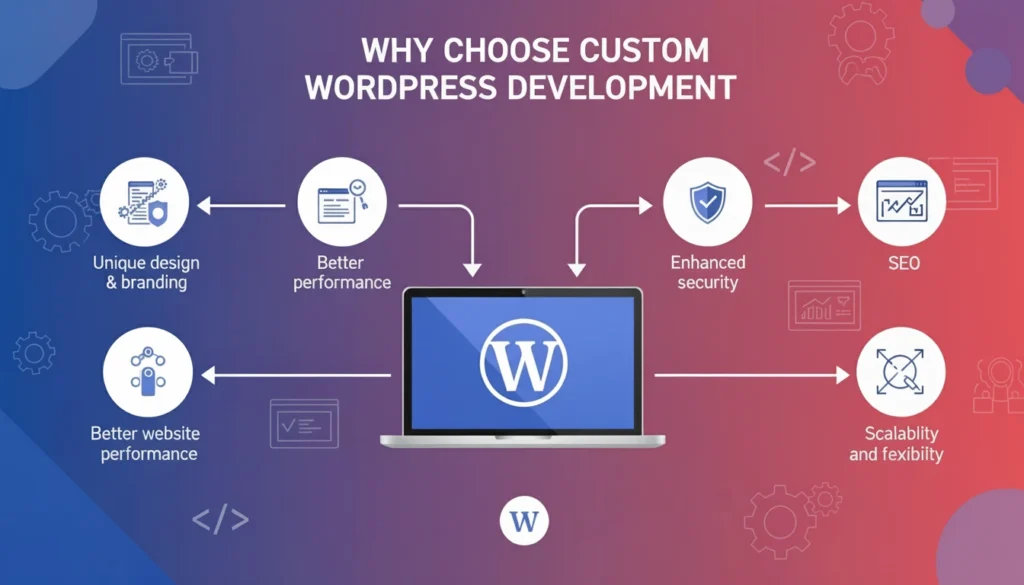
Finding qualified WordPress experts requires evaluating portfolios, checking references, and assessing communication styles. The right WordPress agency understands business objectives beyond just technical requirements. They ask probing questions about goals, audiences, and success metrics.
Partners with a track record of success at scale are necessary for enterprise WordPress projects. Developers with knowledge of security compliance, high traffic load performance, and integration with current enterprise systems are essential for large organisations.
Proposals for custom web development should include clear pricing, milestone deliverables, and comprehensive schedules. Watch out for quotes that seem suspiciously low—quality development calls for qualified experts who charge fair prices. Appropriate upfront investment avoids costly repairs later.
Build Your Custom WordPress Website
Looking to grow your business with a powerful, fast, and secure website? Our WordPress experts deliver custom-built solutions designed to help you stand out, boost conversions, and scale effortlessly.
Get a Free Consultation
How to create a custom WordPress?
Start by planning your requirements and hiring experienced WordPress experts or a WordPress agency who can build custom themes, develop tailored plugins, integrate necessary APIs, and implement security measures. The process typically involves design mockups, development, testing, and deployment over 4-16 weeks, depending on complexity.
Is WordPress custom domain free?
No, custom domains are not free. While WordPress.org software itself is free, you need to purchase a domain name (typically $10-$15/year) and WordPress hosting separately to use a custom domain with your website.
Can I build a WordPress site for free?
Yes, you can use WordPress.com’s free plan with limitations (yoursite.wordpress.com subdomain, limited customization), but for full custom WordPress development with your own domain and complete control, you’ll need paid hosting ($3-$50/month) plus a domain name ($10-$15/year).
Is WordPress still the best option?
Because of its adaptability, large plugin library, robust community support, and frequent security updates, WordPress remains a great option for the majority of websites. For users who require long-term scalability and customisation options, it continues to be especially beneficial.
How much does a custom web design cost?
Custom web development and design typically costs between $5,000 $50,000+, depending on complexity, features, and functionality. Simple custom WordPress website projects start around $5,000-$15,000, while complex enterprise sites with advanced features can exceed $50,000.
What is the fastest hosting provider for WordPress?
Geographical location and particular needs affect performance. Cloudways, SiteGround, Kinsta, and WP Engine are well-known high-performance WordPress hosts. When selecting hosting, take into account elements like content delivery networks, caching technologies, and server locations.
Technical know-how, strategic thinking, and multidisciplinary attention to detail are necessary for mastering custom WordPress development. Whether developing websites internally or assessing possible development partners, these seven secrets offer a road map for success.
Great projects are distinguished from mediocre ones by careful planning, selecting the right technologies, maximising performance, protecting installations, giving mobile experiences top priority, and making long-term growth plans a priority. When WordPress website development is done correctly, it produces strong digital platforms that continue to produce business outcomes for years to come.
The custom WordPress website approach offers unmatched flexibility compared to rigid website builders or proprietary platforms. While taking advantage of WordPress’s strong ecosystem and vibrant community, businesses continue to have total control over their online presence. Any organisation can succeed with custom WordPress development if these seven secrets are properly implemented.

